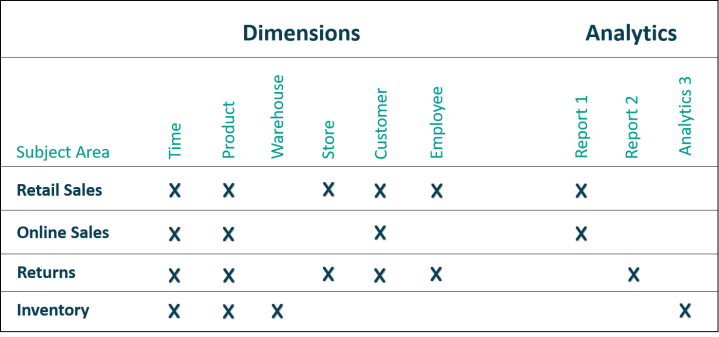After documenting your existing environment, it is time to decide which migration approach you want to follow. In most cases this will be an iterative staged approach. In that case you should begin by planning which subject area and corresponding processes to migrate first.
To provide guidance for planning the migration stages, first establish a method to identify dependencies between your data sets and corresponding dashboards. A good way to do this is to create an information matrix that maps your subject areas and analytical applications. In case you already have an information matrix in place as part of your DWH documentation, you can use that as a starting point.
The following is a simplified example:

Documenting these dependencies helps you identify which data sets and ETL processes to migrate in your first and subsequent iterations.
For your first subject area, we recommend selecting a subject area with medium complexity and high business outcome. For example, the migration will help speed up business critical reports.
After prioritizing the data sets and ETL processes, it is time to plan and document your migration efforts:
- Business outcomes and expectations
- Timeline for the migration including any hard deadline
- A detailed migration execution plan
- Cost estimation
